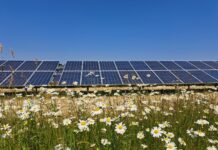
By Martyn Raine, technical skills manager at SNIPEF, the trade association for plumbing and heating professionals in Scotland and Northern Ireland
“Go and put another jumper on” was something I heard as a child; but is it something this generation will hear?
We all deserve the right to be warm; building regulations even focus on having suitable heating systems in dwellings to meet a reasonable standard, but can we afford to run these systems now and how can we be sure they operate as efficiently as possible?
How can we reduce energy costs in our homes whilst still living in a comfortably?
The recent energy cost increases are going to impact everyone across the UK, and the only real way to reduce this cost is to reduce how much energy we use.
Different building types have different options available to make them more efficient, with some being relatively easy and others being more challenging.
The first approach to efficiency should always be focussed on the building fabric, where we look at the current building and evaluate where we may be losing heat and what we can do to reduce that loss.
Some of the easy solutions include introducing insulation to loft or cavity wall. Having the loft insulated will reduce heat loss through the ceilings of the building and stop the cold temperatures striking down, the loft space is usually a ventilated area, which makes it naturally cool, especially in winter, but of course we don’t all have loft spaces
Cavity wall insulation is a method used to fill the void between the internal wall and the external wall of a building. This cavity can be filled with insulation that will reduce the loss of heat from inside the building and reduce the cold from outside
New buildings are built with cavity insulation, a method that has been applied for a number of years. If, however, you occupy an older building, it’s highly likely there is not even a cavity.
There are also buildings that are classed as ‘non-traditional’, maybe a prefabricated structure. meaning it was built in pre-made or pre-cast concrete sections, or of poured concrete rather than the traditional bricks and mortar that can prove more challenging to treat.
Here, options such as internal wall insulation (IWI) of external wall insulation (EWI) might be appropriate, though there are limitation to these techniques and expert advice must be sought before proceeding.
Draught exclusion also needs to be considered. Many homes are not wind or watertight, so addressing some of these basic issues will be beneficial for the efficiency of the building.
From a plumbing and heating perspective we need to look at the way we heat our buildings and how we use the systems that generate the heat.
One of the simple ‘quick wins’ includes insulating our plumbing systems though accessing the pipework may prove challenging and impractical. If you have any pipework in easy to access unheated voids such as under timber floors and in roof spaces that is not insulated this would be a way to reduce the heat loss in the pipework. This means more heat reaches the radiators; so, rooms will heat quicker and reduce the demand on heating appliances.
Suitable controls are essential for optimum efficiency regarding heating systems. Checking to see what your existing heating controls are set at is simple. Look at the times you have set, and if the heating and hot water are operating at times when the building is not being used, make the required changes. Turning heating thermostats down a degree or two may help.
Modern heating systems are required to have suitable controls to ensure optimum efficiency. For example, a new boiler and heating system or a boiler upgrade is required to have independent time and temperature control for both the hot water and the central heating.
The use of thermostatic radiator valves (TRVs) also allows more localised control in rooms. TRVs are radiator valves that operate to the temperature in the area they are located, if the area reaches the set temperature it effectively shuts down the radiator, if the area cools, then the TRV will open the valve to allow heat into the radiator.
There are a range of control types from easy to operate systems to more complex control systems that incorporate smart devices, such as voice-controlled hubs that use wireless technology. The more complex systems can also use geo fencing, which can determine how far away from home you are and only allow the heating to turn on once you are within a certain distance.
Hot water storage is another area. If you have an airing cupboard with a hot water vessel, you can check the thermostat attached to the vessel. Hot water thermostats are usually set at 60 degrees Celsius. You may be tempted to lower the thermostat, but this can have major safety issues. The water in the vessel must be heated to 60-degrees Celsius to pasteurise the water and kill off any harmful bacteria such as Legionella.
Another option could be to upgrade the heating system and the appliances, things like a new boiler, radiators, and controls.
There are also renewable energy solutions, for example, solar thermal hot water. This is the use of a solar panel to heat some or all your domestic water. You could also consider a heat pump, that uses energy from the ground or air to heat the home. You need to consider and assess whether this would actually reduce your energy costs as heat pumps use electricity to operate.
Take the advice of a SNIPEF member who provides heating services on any of the topics mentioned above. There is also impartial energy efficiency advice provided through Home Energy Scotland which may direct you to government support including loans and grants to improve the energy efficiency in your building.








